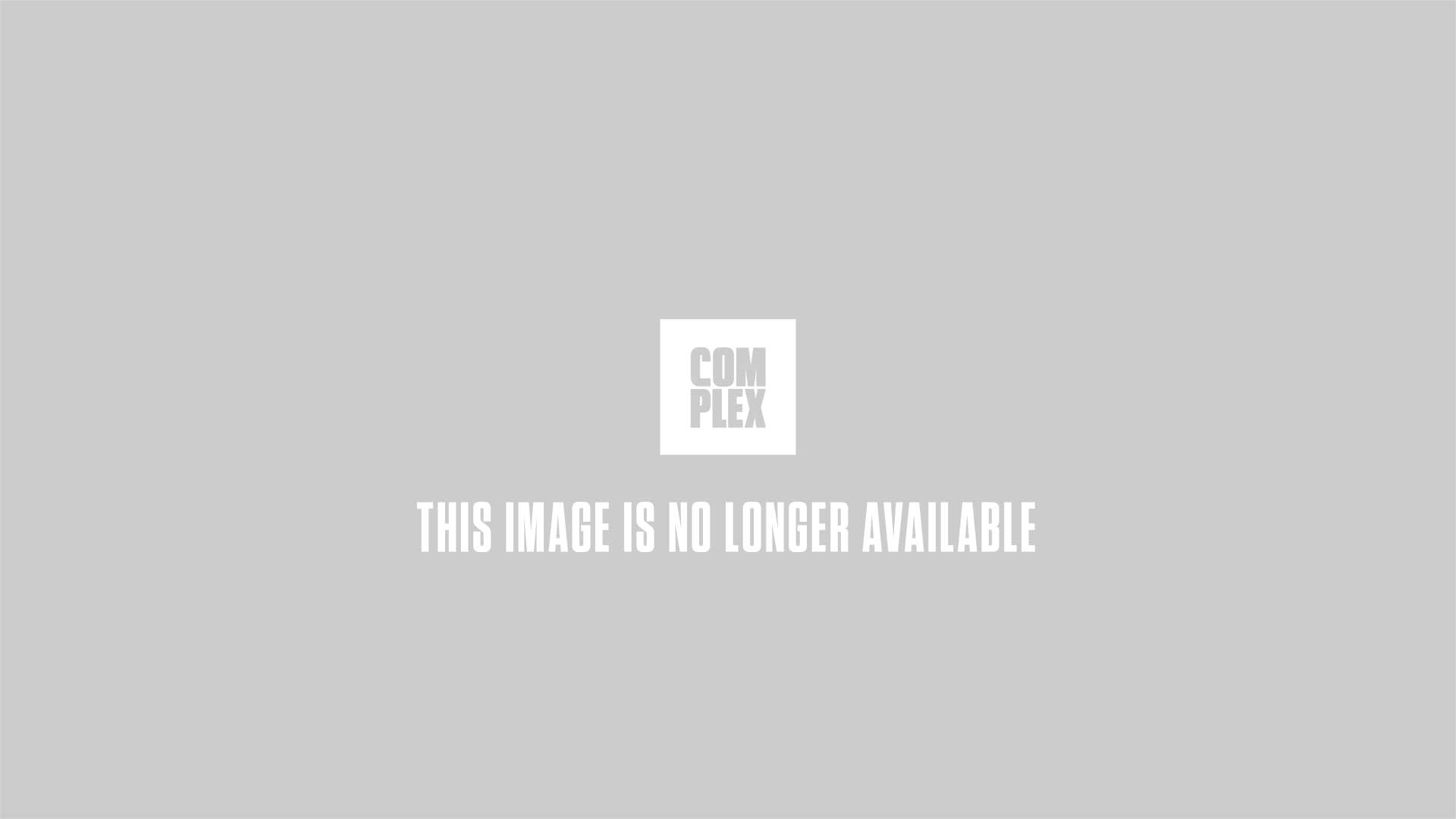
What does a culture, geo-political region, or nation in transition look like? Artists thrive when trying to represent difficult subjects within a single work of art, but depicting change itself might be the most difficult challenge. And with the protests, revolutions, and ill-fated wars that have shaken the globe over the past decade, artists certainly have their work cut out for them—no group more so than artists from the Middle East.
It’s art that makes us think rather than judge.
From the America-led wars in Iraq and Afghanistan to the Arab Spring, Egyptian coups, and the ongoing Syrian civil war, the Middle East hasn’t changed so much as it is continually changing. Showing how artists respond to this state is the ambitious goal of the 2014 FotoFest Biennial in Houston, Texas. The exhibition, called "View From Inside: Contemporary Arab Photography, Video, and Mixed Media Art" (through April 27), was curated by the German independent curator Karin Adrian von Roques, who has worked in the Middle East for much of the past 20 years.
Von Roques’ intimacy with the region is well on display. The vast exhibition, which encompasses dozens of artists and hundreds of works installed across multiple galleries and buildings in Houston, indeed reveals a scattershot picture of what it means to be an artist from the Middle East and North Africa (that’s the fraught regional shorthand used in official descriptions of the show). But despite the presence of many knockout works, that picture can be somewhat difficult to decipher.

Image via FotoFest / Noel Jabbour (Palestine) View point/ Point of View 2012. Courtesy of the Artist
Artists in the exhibition succeed most when taking a long view of their regions' histories. The photographer Rula Halawani presents a clear-eyed portrait of change in her native Palestine by showing archival landscape photographs from 1900 paired with photos taken from the same vantage point over a century later, in 2010. The juxtapositions require viewers to complete the narrative. In one set, a village of stone buildings is present and then gone, replaced by empty desert. In others, stone fortresses decay, unpreserved but also undeveloped, potential cities that never existed. Densely settled areas are overgrown with trees.
By displaying evidence of the destruction that has hit Palestine over the past 100 years rather than ideology or rhetoric, Halawani avoids one easy political interpretation. It’s art that makes us think rather than judge. The same is true of the work of young Egyptian artist Youssef Nabil, who in nostalgic, hand-tinted photographic self-portraits plays a young man of Orientalist archetype: beautiful, garbed in a white robe, timeless. But Nabil complicates that flawed colonialist symbol.
The 2014 FotoFest Biennial has no overarching thesis or argument; it’s a series of glimpses that aggregate to form a larger picture.
The artist’s avatar gazes at modern cities blooming out of the desert, visits western cathedrals, and wanders around a Parisian fair as a more contemporary youth, dressed in a black hoodie. It’s a portrait of globalization that has its roots in a centuries-old aesthetic, taking as much from Ingres as Imhotep, the architect of the first Egyptian pyramids. Nabil underlines the aimlessness of life under globalization. “Home is somewhere, but when it is somewhere else, there is no satisfying or secure answer to this question,” van Roque writes of his work.

Image via FotoFest / Youssef Nabil Say Goodbye, Self Portrait, Alexandria, 2009. Courtesy of the artist and Nathalie Obadia Gallery, Paris/ Brussels.
Less successful are those artists who adopt faddish contemporary art techniques and fail to turn specific subject matter into pieces that are compelling on a wider scale. Steve Sabella, an artist who was born in Jerusalem and works in Berlin, photographs fragments of cityscapes and digitally collages them into near-abstraction.
The pieces inspire in the viewer a kind of urban paranoia, the overwhelming feeling of too much stimulus in too little time. That feeling is “one of the side effects of living in exile,” Sabella says. Yet the execution of the pieces falls flat; they often look like they’re generated by a subtlety-less Flickr algorithm rather than a human being.
Similarly, the Moroccan artist Hicham Benohoud’s self-portraits with Photoshop-like textural effects of tearing paper or cracking pottery (as if Benohoud’s body was ceramic) are fun, but they’re more satisfying as visual jokes than critical art. Bahrainian artist Mohamed Kanoo’s series of Western celebrities Photoshopped into traditional Middle Eastern garb are also facile; it would do better as a BuzzFeed post than in an exhibition.
The 2014 FotoFest Biennial has no overarching thesis or argument; it’s a series of glimpses that aggregate to form a larger picture. But the title, "View From Inside," brings immediately to mind the issue of sight and the border between inside and out. The latter may hold a particular significance to the curator. Van Roque explains that she has “quite a relationship with the work because she lived in Berlin with the wall.” The Palestinian artist Noel Jabbour documents the all-too-similar wall between Israel and Palestine with the careful eye of a photojournalist.

Image via FotoFest / Noel Jabbour (Palestine) Our Pain-Your Sword, 2012. Courtesy of the Artist
Scholar Edward Said’s 1978 Orientalism deconstructed how Western artists defined the identity of the East as an other in contrast with themselves. It’s this kind of sight that the biennial is preoccupied with. It attempts to restore the other half of Said’s equation. At its best, the show demonstrates how Middle Eastern artists see themselves rather than how a framework has been forced upon them.
The beating heart of the exhibition is Iraqi artist Sadik Alfraji’s The House That My Father Built, a multimedia video installation that occupies an enclosed gallery space. It’s a wall-size video projection over a scattering of physical objects: a photo-replica of a set of clothes, two portraits of a man and a woman in traditional garb, and a large painting of a contorted person leaning over. Alfraji made the work when he returned to Iraq following his father’s death after 20 years in exile in Holland (the portraits show his father and mother, and the pants are copied from a pair belonging to his father).
The show demonstrates how Middle Eastern artists see themselves rather than how a framework has been forced upon them.
Reminiscent of the work of South African artist William Kentridge, the video is a swirl of hand-drawn animation that becomes a requiem for the departed parent. Artifacts and memories from a life lived come and go: hints of faces, sets of clothing, landscapes. It’s a touching memorial from son to father.
“When I saw my father’s room in that house, I didn’t think about anything,” Alfraji says. “It was just a very silent moment.” The artist fell into a reverie like the one depicted in the work. “There were only the memories,” he says. “All the things around me disappeared and all the memories went up.”
Alfraji’s video, iconic yet sentimental, specific yet universal, isn’t just about what it means to be from Iraq and to live through conflict, but to be human. And that’s the highest praise any work of art can receive.
"View From Inside: Contemporary Arab Photography, Video, and Mixed-Media Art" is on view in Houston until April 27.

